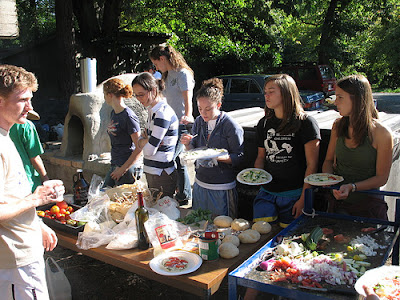 Southeast Asia (from Google Images)
Southeast Asia (from Google Images)Durian is in the Malvaceae family and means “thorny fruit” in Malay. Of the thirty Durio species in Southeast Asia, nine are only edible: D. macrantha, D. zibethinus, D. lowianus , D. oxleyanus, D. grandiflorus, D. graveolens, D. kutejensis , D. testudinarum, and D. dulcis. The fruit is very popular in Southeast Asia, but not so much in America. Even in prehistoric times, it was consumed by natives. In the 1400s to 1800s, durian was mentioned in a couple of writings on its unique shape, smell, size, and taste. A German botanist classified the genius Durio and Alfred Russell Wallace, a British naturalist and anthropologist, wrote “to eat durian is a new sensation worth a voyage to the East to experience.” I encourage anyone who has never eaten durian to try and see how you like it. The flesh is creamy, custard-like, and is wrapped around a seed that is about the length of a pinky finger. I am so glad the fruit can be shipped to the United States, so I would not have to travel half way around the world to enjoy it. In Wallace’s days, it would have taken months!
Different types of Durio are made into milkshakes, cakes, Yule Logs, Malay candy, and ice cream. The seed is also eaten when sliced and fried in oil. A classic durian dish is cooking it with sugar and sticky rice in coconut milk, which is supposed to lighten the pungent aroma.
Once in a while, I go to Marco Polo, an Italian gelato shop in San Francisco, to get a pint of durian gelato and it is so good. Other flavors include sesame, jack fruit, vanilla bean, arcobaleno, red bean, lychee, green tea, pistachio, and guava. Marco Polo is a favorite in San Francisco and it is rare to come across such exotic flavors. I mean where would you hear someone say, “I had a durian gelato today”?
During the summer my mom went to a Chinese supermarket and randomly chose two durians and hoped that both would be appetizing. One of them was one of the most delicious durians I’ve had in a while and the second one was sadly overripe. It was watery and disgusting. We left it in the fridge and eventually threw it away. To prevent future episodes of bad durian, I decided to look for some helpful hints on how to pick a ripe durian. A ripe durian has a hollow sound when you tap the fruit lightly and you should hear the sound of pulps moving inside. The sap from the stem is should also be clear and sweet. I haven’t tested these methods out, but I definitely will try it.
Durian is incredibly nutritious jammed with minerals, fats, and proteins. It has high levels of potassium, vitamin C, tryptophan, and sugar. I’ve been eating it since I was a little girl and I could never imagine how healthy it is. The roots and leaves are even used as medicine to reduce fever by putting leaf juice on the patient’s head. Wow!
The “World Durian Festival” last year was held in Chanthaburi, Thailand. The name is not the official title of the festival because it also celebrates other fruits in season, such as mangosteens, rambutans, longkong, and jackfruit. Chanthaburi is known as the durian capital of the world. Why? The city contains 120,000 acres of durian orchard and produces more than 900,000 tons of durian a year! That’s about half of the world’s total harvest. There were truck-loads of durian, floats decorated with fruits, dances, fruit monuments, parades, and displays of community folk art.

Durian Float (from Google Images)



